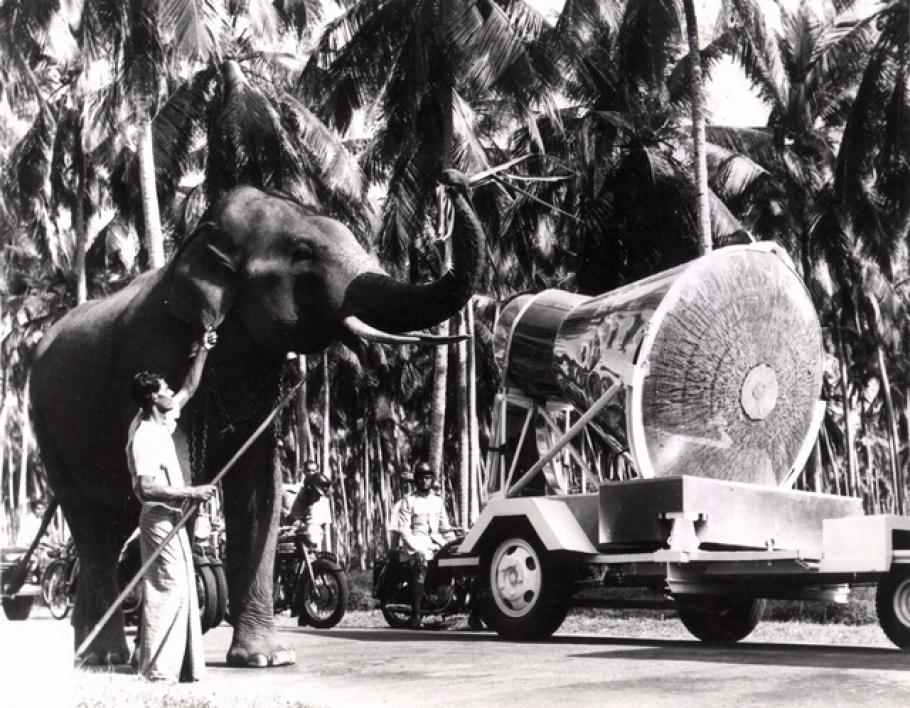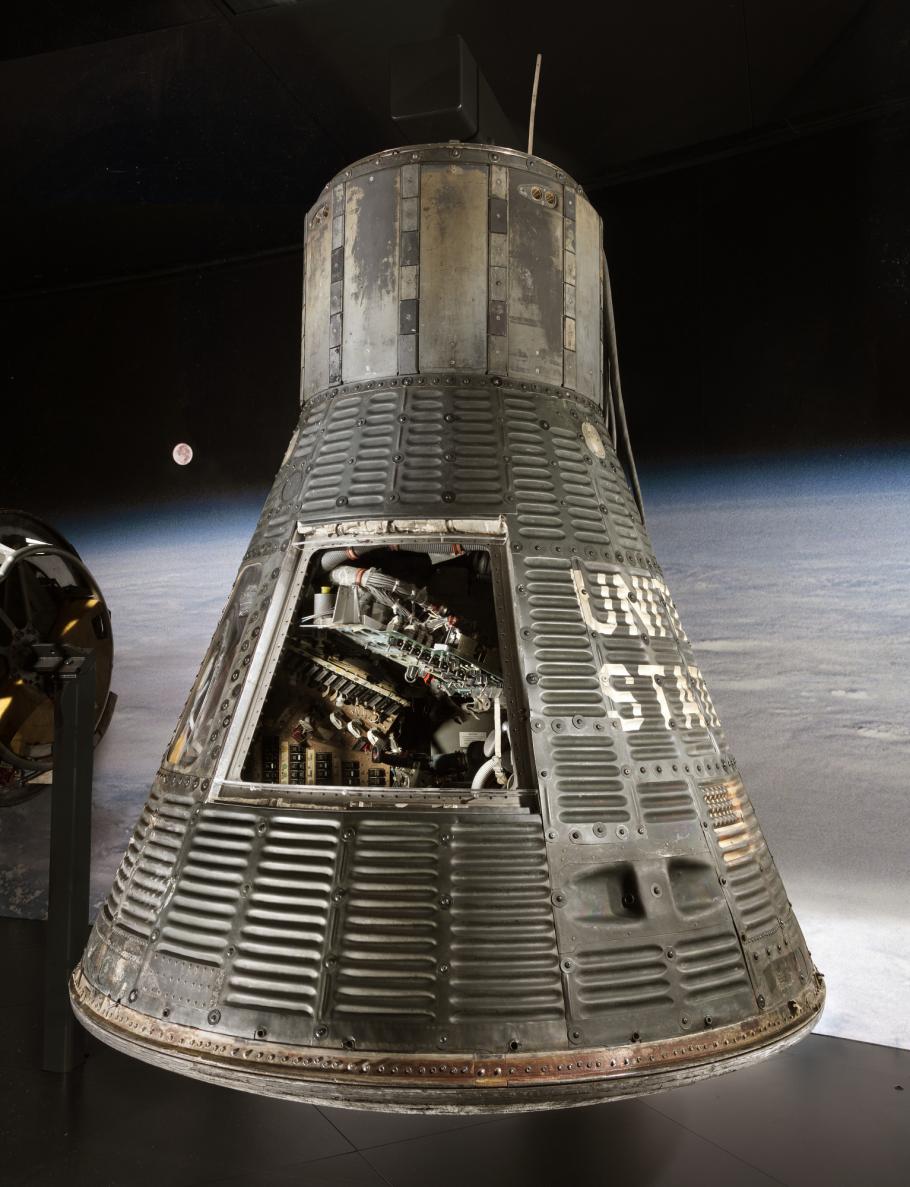The Friendship 7 space capsule was designed to orbit the earth and it did just that on February 20, 1962, with John Glenn, Jr. on board. It circled the globe three times before landing in the Atlantic Ocean. Three months later Friendship 7 began its second mission, or what was popularly referred to as its “fourth orbit:” a worldwide exhibition that was organized to promote and represent the United States and its space program in nearly 30 cities around the world.
Five years earlier, popular reaction to the successful launch of Sputnik in 1957 had prompted government officials in the U.S. and the U.S.S.R. to see spaceflight as a leading means for demonstrating power, technological capability, and national values to the world public. As a result, the U.S. space program, and its exhibition abroad, became important instruments in American foreign relations during the Cold War.
Over the course of its three-month-long world tour, Friendship 7 was seen by roughly four million people. Another 20 million people watched television programs about the capsule, which were broadcast from the exhibition sites. In early May 1962, on the first day the capsule was displayed at the Science Museum in London, thousands of people had to be turned away because the huge crowds overtaxed the facilities. In Madrid, the line to see the capsule was often up to a mile long and Spanish authorities had to be called to control a crowd of 40,000 people around the exhibit. Even though tropical thunderstorms drenched Nigeria and an earthquake shook Mexico during the capsule’s visit, the exhibit caused a much larger stir in every city it visited than officials at NASA and the State Department had imagined.
The capsule was flown around the world in a U.S. Air Force cargo plane that was emblazoned with the words “around the world with Friendship 7” and depicted the “fourth orbit” on a map of the four continents that the capsule visited over the summer. A member of NASA’s Cape Canaveral staff accompanied the craft to answer questions from curious audiences around the world.
At its stop in Egypt, the Friendship 7 capsule exhibit convinced skeptics that the flight had really happened. The Washington Post quoted one onlooker who remarked, “I thought this space flight business was a rumor but now [that] I can see the ship I believe it.” It was important for this exhibit visitor, as it was for many spectators around the world, to see the capsule with their own eyes. In the mid-twentieth century, space exploration had just left the realm of science fiction; the extraordinary idea that a man had orbited the earth was made more comprehensible when the craft that had carried Glenn could be seen and touched in person.
Although the Friendship 7 capsule drew record crowds from Paris and Accra, the capsule received its most overwhelming response in Asia. In the middle of July, when the capsule arrived in India, 50,000 Bombay residents waited for up to four hours to see the display at the Brabourne stadium. In the Philippines, priests, students, grandmothers, and boy scouts waded through six inches of rainwater leftover from a typhoon to see the spacecraft during its first day on display.
In Japan, the capsule was taken to Takashimaya, the leading department store in downtown Tokyo, where exhibits were usually mounted. Several hundred police and guides were called in to direct the crowd into a line that climbed nine flights of stairs, zigzagged across the roof of the building, and then descended back down nine flights of stairs to the first floor where the capsule was on display. In the first hour alone more than 12,000 people saw it, while over the course of its four-day visit more than 500,000 people came to the store to see Friendship 7 in person.
When Friendship 7 took its fourth orbit, it was for all practical purposes a defunct piece of machinery. After it landed in the Atlantic Ocean in 1962, the capsule had done what it was designed to do: to orbit the earth. Having outlived its technical utility, its display conveyed not only the fact that the first orbital flight had happened, but also that the American space program was open.
A year after his flight John Glenn wrote to McGeorge Bundy, President Kennedy’s National Security Advisor, that the Friendship 7’s ”fourth orbit” tour, “stressed the fact that [the American space program] was not just a propaganda effort before the world, but a well-thought-out scientific program that could eventually benefit all peoples of the world as the scientific exploration it is.” He went on to note that Russian exhibits highlighted personal appearances of cosmonauts while the United States emphasized scientific information via the capsule’s display. According to Glenn, America’s greatest advantage over the Soviet Union’s space program was “the almost complete freedom to share experiences and new information.” He suggested that the openness of the American program—as represented by the display of the spacecraft—stood in for the nation and its political ideology: when the Friendship 7 capsule was laid bare before the eyes of people from around the world it gave the impression that the U.S. space program was real, benign, apolitical, and designed for the collective benefit of all mankind.


